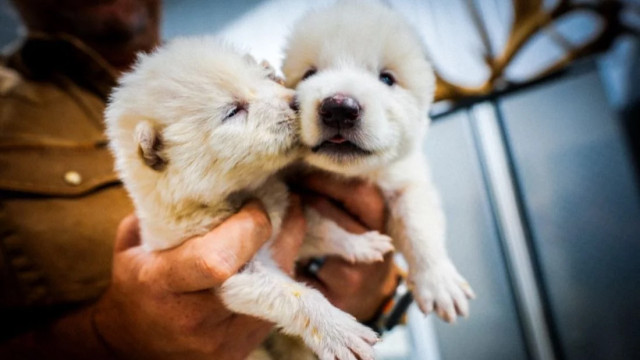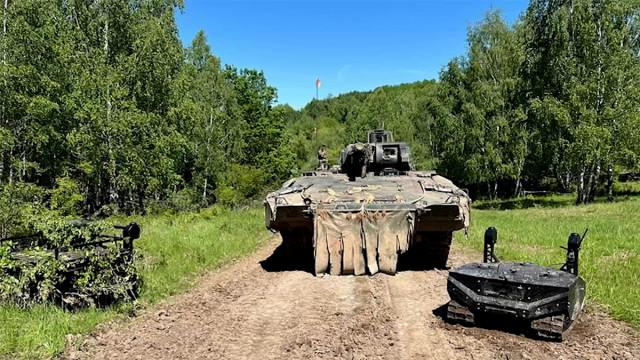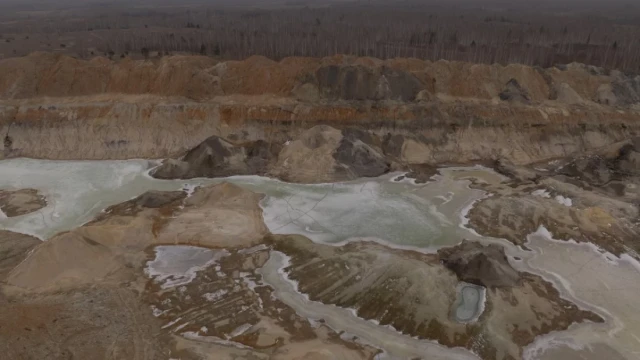USA, Apr 09 (V7N) –A US bioscience company has reconstructed the complete genome of a wolf species, the dire wolf, that went extinct more than 10 millennia ago to produce three wolf cubs that could resemble their ancient ancestors.
The three pups, named Romulus, Remus and Khaleesi, which range in age from three to six months old, will be larger and more muscular than related modern gray wolves if and when they reach adulthood, Colossal Biosciences said on Monday.
Using ancient DNA from fossils
Researchers at the company used ancient DNA from fossils dating back 11,500 and 72,000 years to reconstruct the genome of the dire wolf.
The scientists then took blood cells from a gray wolf and genetically modified them in 20 different sites, Colossal's chief scientist Beth Shapiro told the AP news agency.
This genetic material was then transferred to an egg cell from a domestic dog, after which embryos were transferred to surrogates, also domestic dogs, she said.
The pups were then born 62 days later.
Their location has been kept secret to prevent inquisitive spectacle-seekers from disturbing them.
The pups currently weigh some 36 kilograms with a length of 4 feet and are expected to grow to 1.8 metres at a weight of 68 kilograms.
According to Time magazine, the young wolves are being fed a diet of beef, horse, and deer meat, in addition to other offal and puppy chow.
Aim of ‘de-extinction’
The dire wolf once inhabited an area ranging as far south as Venezuela right up to Canada.
Independent scientists have said the achievement does not necessarily mean that the animals will soon be roaming their former habitat once more.
"All you can do now is make something look superficially like something else" and not fully revive extinct species, Vincent Lynch, a biologist at the University at Buffalo who was not involved in the research told AP.
Colossal's chief animal care expert Matt James told the agency that the pups would probably never learn to kill large prey because they had no parents to teach them.
Colossal has previously announced similar projects to genetically alter cells from living species to create animals resembling extinct woolly mammoths, dodos and others, saying on its website it "is closer to restoring the past, preserving the present and safeguarding the future than anyone before."
It says that the same techniques it uses to recreate extinct species could prevent existing endangered animals from dying out.
END/MSS/AJ





























Comment: